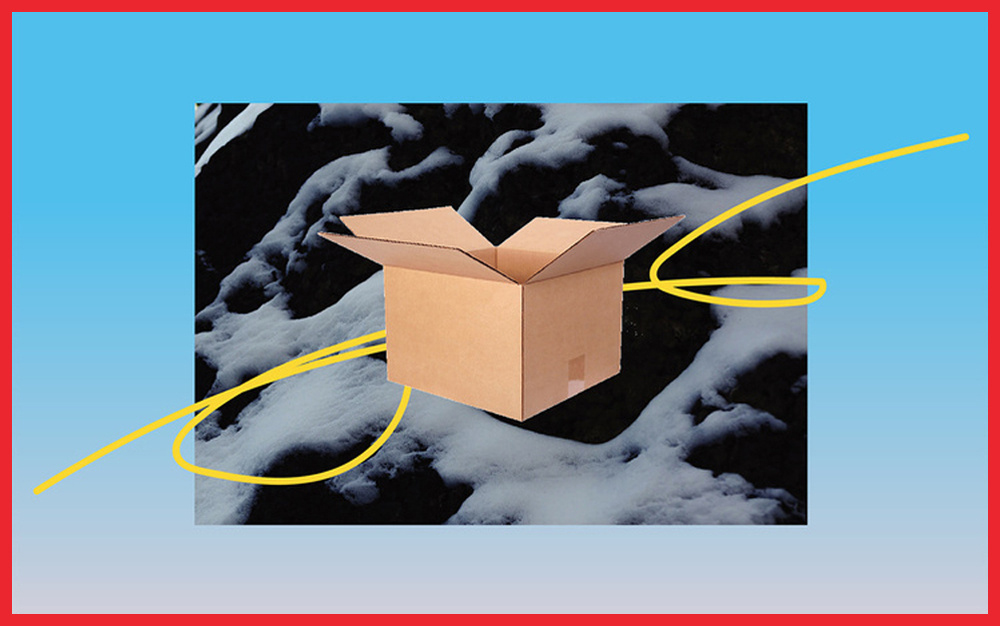Buying behaviours are shaped with deals. Here are businesses who gained loyal customers by not playing the transactional game.
WHAT IF YOU DIDN’T TRY
WHAT IF YOU DIDN’T TRY
TO SELL ANYTHING?
(PART 1)
Words by Yoon

©Somewhere Else
When E-commerce giants shape buying behavior with a non-stop parade of deals.
The 2019 Singapore retail apocalypse saw many casualties. Sasa, Borders, Forever 21, Uber… just to name a few. Online, daily-deal and coupon sites are booming. Shopee, Qoo10, Lazada, Grab.
Shoppers aren’t on the lookout for specific product brands anymore; they aren’t even that particular about specific platforms. Sales cycles revolve around 12/12, 01/01, 02/02… and every minor holiday you can think of. Shoppers make the time to hunt for coupons, camp out for flash sales, cross-check prices. Loyalties are scattered and flimsy. Needs are nearly irrelevant. That $45 no-name five-piece luggage set isn’t for an upcoming holiday — it’s for bragging rights on scoring a bargain.
To smaller brands, the message seems clear. In Singapore, price rules purchasing decisions.
So, you match promotional pricing. Business picks up. The promotion is a raging success. But when your prices returns to normal, you lose your audience. Shoppers who buy based on transactional value, seldom buy again unless you’re still the cheapest deal in town. In other words, they don’t love you for you. Meanwhile, websites that aggregate deals and promos will STILL have deals, promos, and $45 no-name five-piece luggage sets.
“What’s a small business to do?
The answer: Stop trying to sell things.”
The answer: Stop trying to sell things.”

©patagonia
In a campaign launched for Black Friday, the biggest shopping day of the year, Patagonia famously encouraged shoppers NOT to buy their products. Why? Because even with Patagonia’s commitment to sustainability and low-waste methods, every jacket produced still incurred an environmental cost. The company, dedicated to their environmental purpose, could not promote rabid consumerism without being hypocrites.
That year, Patagonia created a repair, reuse and trade program for their products, so that their audience wouldn’t have to buy new items. Ironically, the more Patagonia doubled down on its anti-consumerist message, the more people it attracted. Revenue grew by 30%.
Driven by their mission of being “in business to save our home planet”, Patagonia poured money into environmental R&D instead of marketing and advertising. Their activist networks grew. In 2018, they were listed No.6 on World’s Most Innovative Companies.
By focusing on purpose-driven actions and impact, they captured the loyalty of environmentally-conscious consumers. To Patagonia’s loyal audience, the price tags are secondary to being part of a shared purpose.
That year, Patagonia created a repair, reuse and trade program for their products, so that their audience wouldn’t have to buy new items. Ironically, the more Patagonia doubled down on its anti-consumerist message, the more people it attracted. Revenue grew by 30%.
Driven by their mission of being “in business to save our home planet”, Patagonia poured money into environmental R&D instead of marketing and advertising. Their activist networks grew. In 2018, they were listed No.6 on World’s Most Innovative Companies.
By focusing on purpose-driven actions and impact, they captured the loyalty of environmentally-conscious consumers. To Patagonia’s loyal audience, the price tags are secondary to being part of a shared purpose.

©Twitter, @minliangtan
Razer makes high-end gaming computers. Chinese competitors offer similar products for a fraction of the cost. Reputable brands make solid alternatives at half the price. And yet, Razer (founded in 2005 by Singaporean Tan Min Liang) has grown into a multi-billion-dollar company with a global following so loyal, that they get the brand logo tattooed on themselves.
How did Razer grow from being a maker of gaming mice, to the leading lifestyle brand for gamers worldwide? Not by competing on price. From the start, Razer’s brand mission has been clear. They aren’t a gaming company. They are a company for gamers. “For gamers, by gamers”— their tagline reinforces their priorities: to understand their audience, and put them first in everything that they do.
Many companies today make this claim, but few stand by it the way Razer does. Case in point: When an unauthorised coupon code offering 90% off Razer products leaked online, the company was flooded with orders from delighted fans. Legally, Razer was under no obligation to fulfill any of these orders. But they did anyway, at 90% off.
CEO Tan Ming Liang, intent on not disappointing gaming fans, asked the community for patience while they sorted through piles of backorders. Razer willingly suffered an enormous loss from this episode, in order to put their audience first. Gamers are not simply purchasers of gaming gear — they’re people too. By understanding the lives and motivations of their core audience, Razer branched out into music, movies, sports, VR, and virtual currency—and their audience keeps growing.
Both Patagonia and Razer have one thing in common: a strong purpose that drives all their brand actions. For Patagonia: to save the planet. For Razer: putting gamers first. When everything you do amplifies a clear and singular message, you start attracting the right kind of audience. The kind who has chosen you for reasons other than price — because they believe in your purpose too.
You’re now a brand, trading on emotional value, rather than transactional value. While transactional customers make simple, rational decisions based around price, an audience that has chosen you based on emotional value makes seemingly irrational decisions.
They buy your products again and again. They’ll stick with you through price increases. They evangelise on your behalf, and convert friends and family to your cause. That sounds a whole lot better than trying to repack the same old promos in different ways, leaving money on the table to repeatedly attract a bunch of one-time buyers.
But how do you even define emotional value? How can you start moving beyond transactional value, into emotional value? We’ll talk about this in Part 2 of “What If You Didn’t Try To Sell Anything?”
How did Razer grow from being a maker of gaming mice, to the leading lifestyle brand for gamers worldwide? Not by competing on price. From the start, Razer’s brand mission has been clear. They aren’t a gaming company. They are a company for gamers. “For gamers, by gamers”— their tagline reinforces their priorities: to understand their audience, and put them first in everything that they do.
Many companies today make this claim, but few stand by it the way Razer does. Case in point: When an unauthorised coupon code offering 90% off Razer products leaked online, the company was flooded with orders from delighted fans. Legally, Razer was under no obligation to fulfill any of these orders. But they did anyway, at 90% off.
CEO Tan Ming Liang, intent on not disappointing gaming fans, asked the community for patience while they sorted through piles of backorders. Razer willingly suffered an enormous loss from this episode, in order to put their audience first. Gamers are not simply purchasers of gaming gear — they’re people too. By understanding the lives and motivations of their core audience, Razer branched out into music, movies, sports, VR, and virtual currency—and their audience keeps growing.
Both Patagonia and Razer have one thing in common: a strong purpose that drives all their brand actions. For Patagonia: to save the planet. For Razer: putting gamers first. When everything you do amplifies a clear and singular message, you start attracting the right kind of audience. The kind who has chosen you for reasons other than price — because they believe in your purpose too.
You’re now a brand, trading on emotional value, rather than transactional value. While transactional customers make simple, rational decisions based around price, an audience that has chosen you based on emotional value makes seemingly irrational decisions.
They buy your products again and again. They’ll stick with you through price increases. They evangelise on your behalf, and convert friends and family to your cause. That sounds a whole lot better than trying to repack the same old promos in different ways, leaving money on the table to repeatedly attract a bunch of one-time buyers.
But how do you even define emotional value? How can you start moving beyond transactional value, into emotional value? We’ll talk about this in Part 2 of “What If You Didn’t Try To Sell Anything?”




